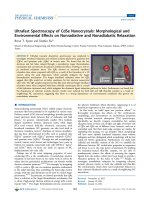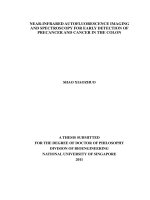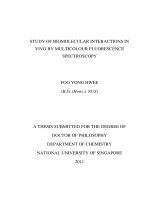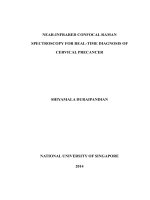- Trang chủ >>
- Sư phạm >>
- Sư phạm hóa
Chapt13 spectroscopy
Bạn đang xem bản rút gọn của tài liệu. Xem và tải ngay bản đầy đủ của tài liệu tại đây (1.14 MB, 59 trang )
CHAPTER 13
SPECTROSCOPY
U
ntil the second half of the twentieth century, the structure of a substance—a newly
discovered natural product, for example—was determined using information
obtained from chemical reactions. This information included the identification of
functional groups by chemical tests, along with the results of experiments in which the
substance was broken down into smaller, more readily identifiable fragments. Typical of
this approach is the demonstration of the presence of a double bond in an alkene by catalytic hydrogenation and subsequent determination of its location by ozonolysis. After
considering all the available chemical evidence, the chemist proposed a candidate structure (or structures) consistent with the observations. Proof of structure was provided
either by converting the substance to some already known compound or by an independent synthesis.
Qualitative tests and chemical degradation have been supplemented and to a large
degree replaced by instrumental methods of structure determination. The most prominent
methods and the structural clues they provide are:
• Nuclear magnetic resonance (NMR) spectroscopy tells us about the carbon
skeleton and the environments of the hydrogens attached to it.
• Infrared (IR) spectroscopy reveals the presence or absence of key functional
groups.
• Ultraviolet-visible (UV-VIS) spectroscopy probes the electron distribution, especially in molecules that have conjugated electron systems.
• Mass spectrometry (MS) gives the molecular weight and formula, both of the
molecule itself and various structural units within it.
487
Back
Forward
Main Menu
TOC
Study Guide TOC
Student OLC
MHHE Website









